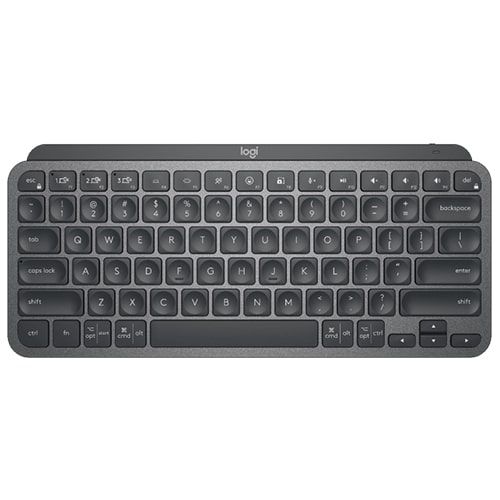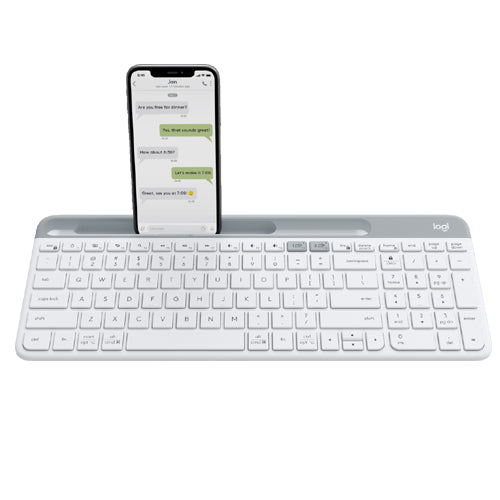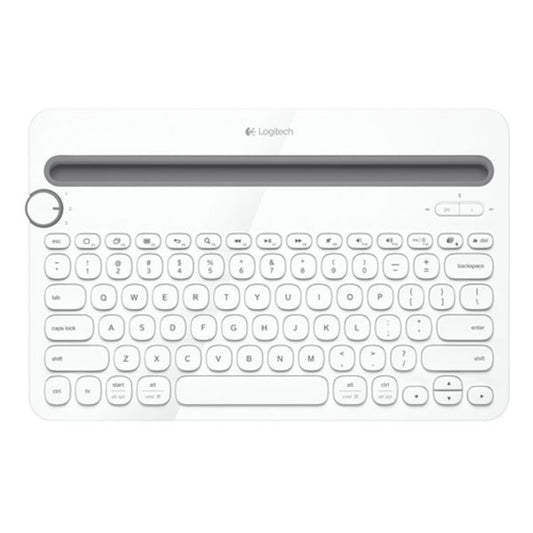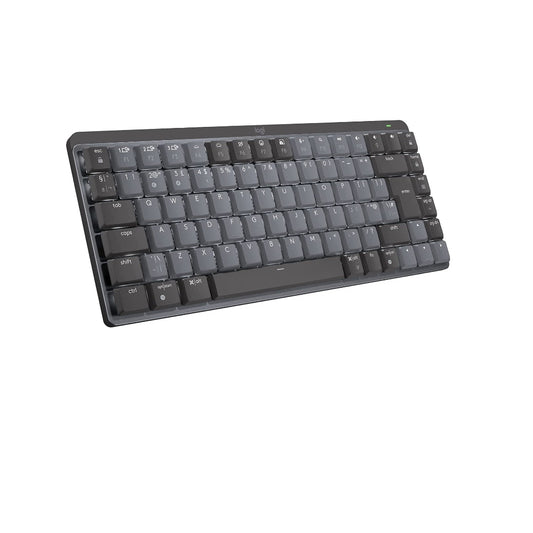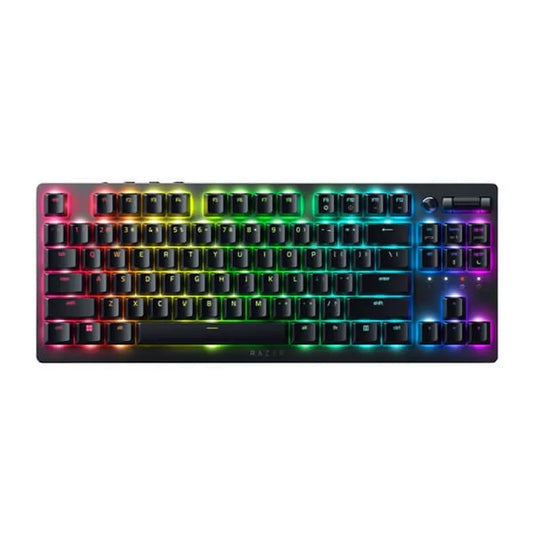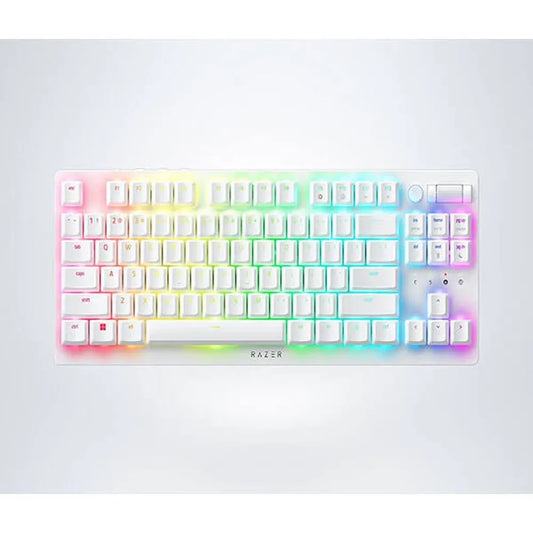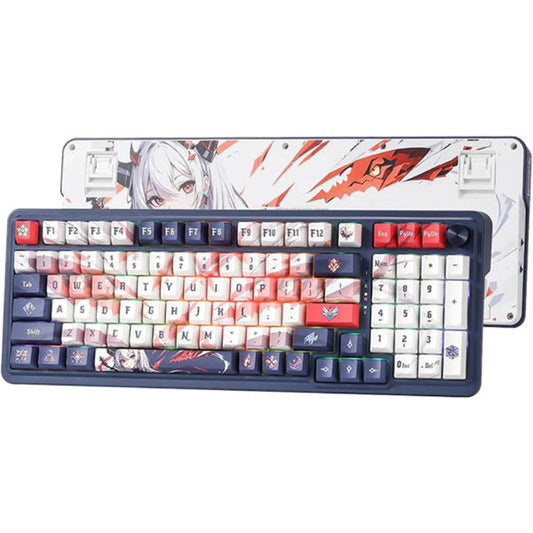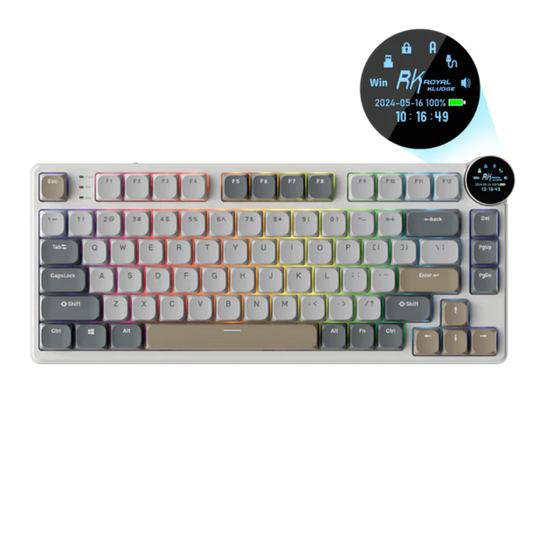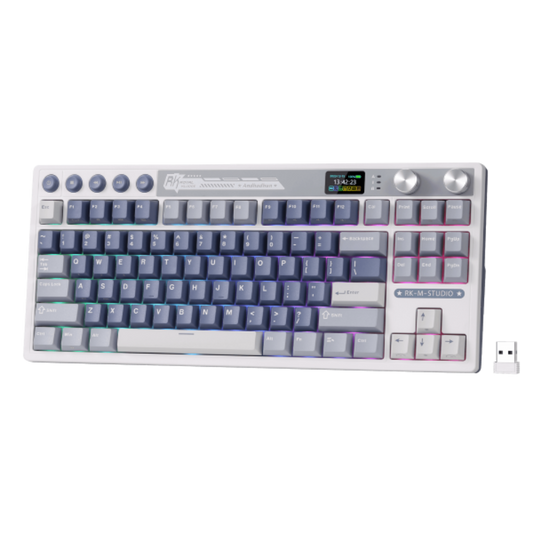RAZER BlackWidow V3 Pro RGB Full Size Mechanical Wireless + Bluetooth Gaming Keyboard ( Razer Green Switch )
Rs. 13,627.00
Rs. 15,999.00
RAZER BlackWidow V3 Pro RGB Full Size Mechanical Wireless + Bluetooth Gaming Keyboard ( Linear Yello Switch )
Rs. 11,997.00
Rs. 29,999.00
LOGITECH MK850 Full Size Wireless Gaming Keyboard and Gaming Mouse Combo
Rs. 5,699.00
Rs. 7,995.00
LOGITECH MX Keys Mini Membrane Wireless Keyboard ( Black )
Rs. 7,686.00
Rs. 12,995.00
LOGITECH POP Keys 60% Semi Mechanical Wireless Keyboard ( Mint ) ( Brown Switch )
Rs. 8,654.00
Rs. 9,995.00
LOGITECH POP Keys 60% Semi Mechanical Wireless Keyboard ( Rose ) ( Brown Switch )
Rs. 6,995.00
Rs. 9,995.00
LOGITECH K580 60% Membrane Wireless Keyboard ( Graphite )
Rs. 3,595.00
Rs. 3,995.00
LOGITECH K580 60% Membrane Wireless Keyboard ( Off-White )
Rs. 3,410.00
Rs. 3,995.00
LOGITECH Signature K650 Full Size Membrane Wireless keyboard ( Graphite )
Rs. 4,695.00
Rs. 5,599.00
LOGITECH Signature K650 Full Size Membrane Wireless keyboard ( Off-White )
Rs. 4,298.00
Rs. 4,695.00
LOGITECH MX Keys Full Size Mechanical Wireless Keyboard ( Graphite )
Rs. 17,997.00
Rs. 22,500.00
LOGITECH MX Keys S Full Size Mechanical Wireless Keyboard ( Graphite )
Rs. 8,349.00
Rs. 16,999.00
LOGITECH MX Keys Mini Membrane Wireless Keyboard ( Graphite )
Rs. 10,749.00
Rs. 16,999.00
DELL KM7120W Full Size Membrane Wireless + Bluetooth Gaming Keyboards ( Black )
Rs. 5,500.00
Rs. 7,999.00
RAZER DeathStalker V2 Pro RGB Full Size Wireless + Bluetooth Gaming keyboard ( Black ) ( Linear Optical Switch )
Rs. 12,699.00
Rs. 26,246.00
RAZER DeathStalker V2 Pro RGB Full Size Wireless + Bluetooth Gaming Keyboard ( Clicky Purple Switch )
Rs. 14,695.00
Rs. 24,624.00
RAZER DeathStalker V2 Pro RGB Tenkeyless Wireless + Bluetooth Gaming Keyboard ( Linear Optical Red Switch )
Rs. 9,999.00
Rs. 26,246.00
COSMIC BYTE CB-GK-40 Artemis 68 Keys RGB Wireless Mechanical Gaming Keyboard ( Blue Switch ) ( Black )
Rs. 2,999.00
Rs. 3,699.00
AULA F2183 TKL RGB Wireless Bluetooth Mechanical Gaming Keyboard ( Black ) ( Clicky Blue Switch ) (F2183)
Rs. 4,999.00
Rs. 15,999.00
AULA F2183 TKL RGB Wireless Bluetooth Mechanical Gaming Keyboard ( White ) ( Clicky Blue Switch ) (F2183)
Rs. 4,999.00
Rs. 15,999.00
REDRAGON Eisa K686 Pro 96% Mechanical Wireless Gaming Keyboard ( Blue ) ( Hi-Fi Linear Switch )
Rs. 5,063.00
Rs. 8,990.00
REDRAGON K556 Dharma Pro RGB Full Size Wireless Gaming Keyboard ( black ) ( Linear Red Switch )
Rs. 4,489.00
Rs. 7,990.00
REDRAGON K673 Ucal Pro 75% Mechanical Wireless Gaming Keyboard ( Abyssal Blue ) ( Linear Red Switches )
Rs. 3,559.00
Rs. 5,990.00
ROYAL KLUDGE RK M87 75% TKL RGB Mechanical Wireless + Bluetooth Gaming Keyboard ( Red ) ( Cream Switch )
Rs. 7,899.00
Rs. 10,299.00
ROYAL KLUDGE RK S98 Full Size RGB Mechanical Wireless Gaming Keyboard ( Light Cloud ) ( RK Brown Switch )
Rs. 8,099.00
Rs. 13,689.00
ROYAL KLUDGE RK S98 Full Size RGB Mechanical Wireless Gaming Keyboard ( BlackBerry ) ( RK Brown Switch )
Rs. 8,099.00
Rs. 14,599.00
ROYAL KLUDGE RK S98 Full Size RGB Mechanical Wireless Gaming Keyboard ( Light Cloud ) ( Chartreuse Switch )
Rs. 8,099.00
Rs. 13,689.00
ROYAL KLUDGE RK S98 Full Size RGB Mechanical Wireless Gaming Keyboard ( BlackBerry ) ( Chartreuse Switch )
Rs. 8,099.00
Rs. 14,599.00
ROYAL KLUDGE RK N80 75% RGB Mechanical Wireless Gaming Keyboard ( Pearly Dawn ) ( RK Low Profile Brown )
Rs. 7,899.00
Rs. 13,499.00
ROYAL KLUDGE RK M87 75% RGB Mechanical Wireless + Bluetooth Gaming Keyboard ( Blue ) ( Clicky Blue Switch )
Rs. 6,319.00
Rs. 10,299.00
ROYAL KLUDGE RK N80 75% RGB Mechanical Wireless Gaming Keyboard ( Pearly Dawn ) ( RK Low Profile Red )
Rs. 7,899.00
Rs. 13,499.00
ROYAL KLUDGE RK N80 75% RGB Mechanical Wireless Gaming Keyboard ( Rosy Clouds ) ( RK Low Profile Brown )
Rs. 6,319.00
Rs. 13,899.00
ROYAL KLUDGE RK N80 75% RGB Mechanical Wireless Gaming Keyboard ( Rosy Clouds ) ( RK Low Profile Red )
Rs. 6,319.00
Rs. 13,899.00




